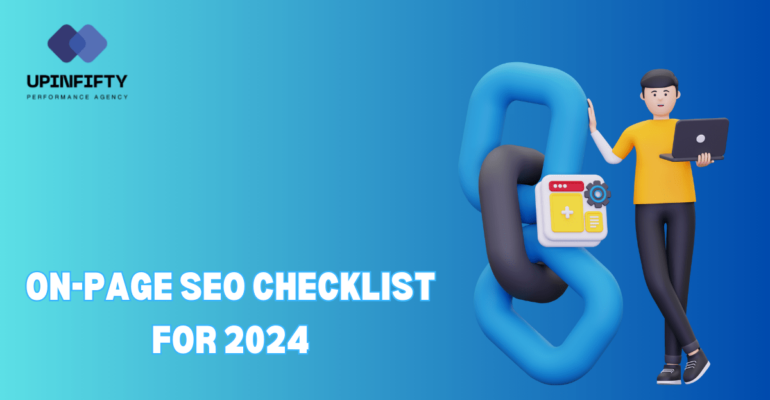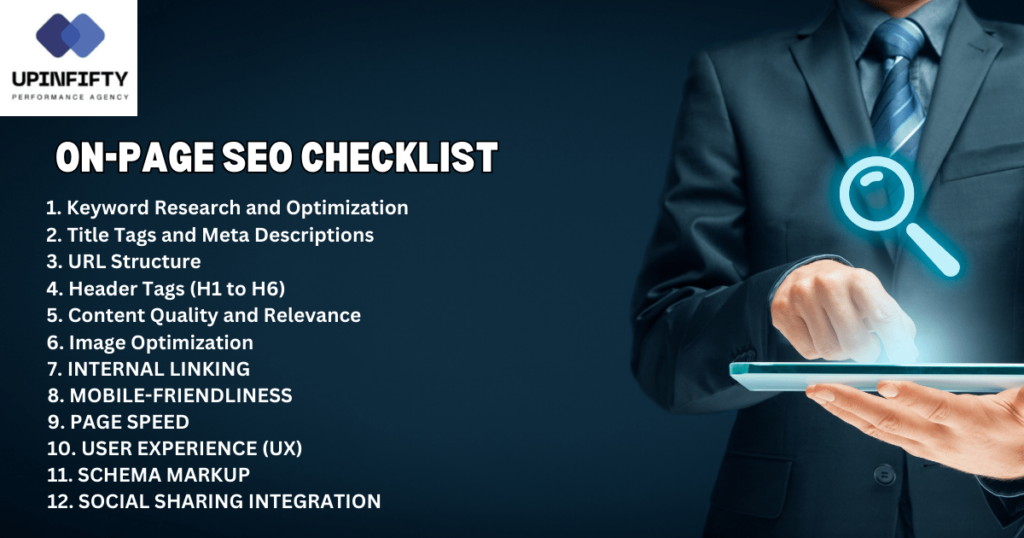Complete Basic On-Page SEO Checklist for 2024

Complete Basic On-Page SEO Checklist for 2024
Table of Contents
Let’s explore all about basic On-Page SEO checklist in this article, In the changing world of digital marketing, staying ahead of the competition requires a deep understanding of SEO practices. Basic On-page SEO is a fundamental aspect that makes sure that your website is optimized for search engines and provides the best user experience. This “Basic On-Page SEO Checklist for 2024” is designed to equip you with the latest strategies and best practices to enhance your website’s performance & visibility.
Understanding Basic On-Page SEO
Basic On-page SEO are optimization technique applied directly within your website to improve its search engine rankings. This includes content, HTML code, and overall site structure. Effective basic on-page SEO helps search engines understand your website’s content and relevance to user queries, ultimately leading to higher rankings and increased organic traffic.
Comprehensive Basic On-Page SEO Checklist for 2024

1. Keyword Research and Optimization
Conduct Deep Keyword Research
Before creating any content, conduct deep keyword research using tools like Google Keyword Planner, Ahrefs, or SEMrush. Try to use high-traffic, low-competition keywords relevant to your industry.
Optimize for Primary and Secondary Keywords
Use your primary keyword naturally within the first 100 words, in the title, and at least one subheading. Use secondary keywords & their variations throughout the content to enhance relevance but avoid keyword stuffing.
2. Title Tags and Meta Descriptions
Craft Compelling Title Tags
Keep your title tags unique & descriptive, and include the primary keyword in it. The ideal length for title tags is under 60 characters try to follow this limit to avoid cut off in search results.
Write Engaging Meta Descriptions
They act as a mini-advertisement and lure users to click on your link. So, meta descriptions should be persuasive, under 160 characters, and must contain the primary keyword.
3. URL Structure
Use SEO-Friendly URLs
Create clear, concise, and descriptive URLs that include the primary keyword and avoid using special characters, numbers or excessive lengths.
4. Header Tags (H1 to H6)
Use Proper Header Tags
Use header tags (H1 to H6) to structure your content logically. The H1 tag must contain the main keyword and should define the page’s main topic. To make content more readable break down content using H2 and H3 tags for subheadings.
5. Content Quality and Relevance
Produce High-Quality Content
Focus on creating valuable, informative, and engaging content that matches user intent. Make sure that your content is well-researched, original, and provides actionable insights.
Maintain Content Relevance
Outdated information can harm your SEO efforts and user trust. So, regularly update your content to keep it current & relevant.
6. Image Optimization
Optimize Image Alt Text
Use descriptive alt text for all images, including the primary keyword where relevant. This helps search engines understand the content of your images and improves its accessibility.
Compress Images for Faster Loading
Reduce image file sizes using compression tools like TinyPNG or ImageOptim without decreasing the quality to improve page load times.
7. Must have Internal Linking
Use Strategic Internal Links
Use internal links to guide users to related content within your site. This improves navigation, keeps users engaged for a longer duration, and distributes link equity across your web pages.
8. Mobile-Friendliness
Ensure Mobile Responsiveness
With the majority of searches conducted on mobile devices, ensure your website is fully responsive. Use Google’s Mobile-Friendly Test tool to identify and fix issues.
9. Page Speed
Improve Page Load Times
Page speed is important for both user experience as well as SEO. Optimize your website’s loading time by minimizing CSS, JavaScript, and HTML, enabling browser caching, and using a Content Delivery Network (CDN).
10. User Experience (UX)
Enhance Overall User Experience
Focus on creating the best user experience possible with built-in navigation, clear calls to action, and minimal unwanted elements like pop-ups. A positive UX leads to longer visit durations and lower bounce rates.
11. Schema Markup
Implement Structured Data
Use schema markup to provide search engines with additional information about your content. This can enhance your SERP appearance with rich snippets, potentially increasing click-through rates(CTR).
12. Social Sharing Integration
Encourage Social Sharing
Add social media buttons to make it easy for users to share your content on platforms like Facebook, Twitter, and LinkedIn. Social signals can indirectly impact your SEO by driving traffic and increasing visibility.
To conclude, understand that, in 2024, mastering basic on-page SEO will be more important than ever. By following the above comprehensive checklist, you can ensure your website is well-optimized for search engines and provides a superior user experience. Stay updated with the latest SEO trends and continuously refine your strategies to maintain and improve your search engine rankings. Implement these practices, and you’ll be well on your way to achieving sustained online success.
Moreover, to get a full-fledged SEO Service that suits your business, contact Upinfifty, the best SEO Agency in Texas, USA.





